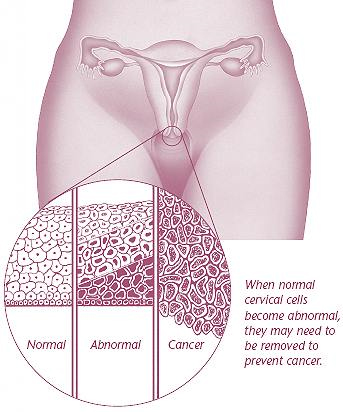 When cervical changes are suspicious for cancer, a LEEP may be done to identify and remove problem areas. A LEEP is done under local anesthetic, similar to the type of local anesthetic that would be used for sutures. The LEEP itself is painless, and is a very thin wire that is heated with electric current. Using this, the doctor is able to cut away any suspicious areas. The sections that are removed are sent to a pathologist, who identifies the type of changes that were seen on the cervix. An advantage of this type of biopsy is that it usually will remove any problem spots, and so it serves as biopsy and treatment at the same time.
When cervical changes are suspicious for cancer, a LEEP may be done to identify and remove problem areas. A LEEP is done under local anesthetic, similar to the type of local anesthetic that would be used for sutures. The LEEP itself is painless, and is a very thin wire that is heated with electric current. Using this, the doctor is able to cut away any suspicious areas. The sections that are removed are sent to a pathologist, who identifies the type of changes that were seen on the cervix. An advantage of this type of biopsy is that it usually will remove any problem spots, and so it serves as biopsy and treatment at the same time.
A LEEP does affect the shape of the cervix and there is some potential for shortening or scarring of the cervix. For this reason, it is not appropriate in pregnant patients, and may not be the preferred option for special cases, such as very young patients. Patients should also know that they should abstain from sex for four weeks to allow complete healing of the cervix.
